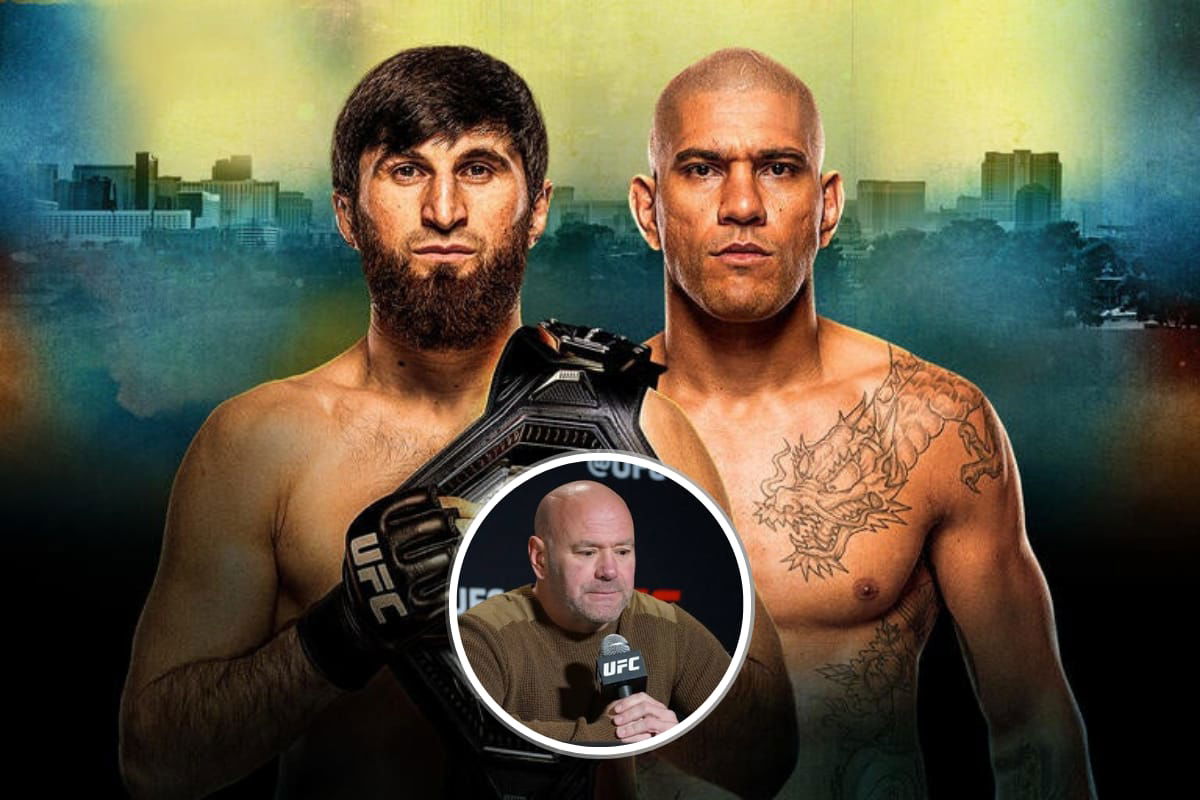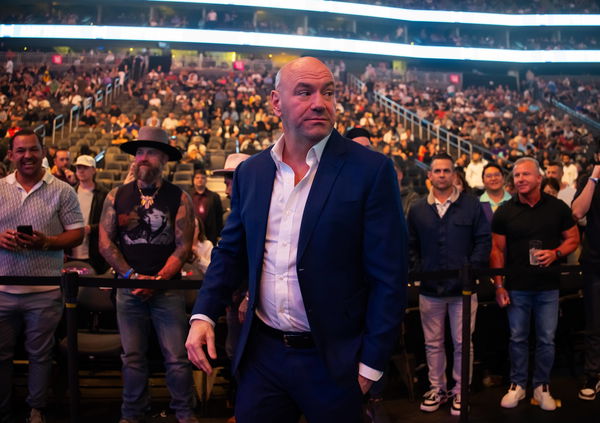

Nothing fires up MMA fans like the lyrics: “Human beings in a mob. What’s a mob to a king?… What’s a god to a non-believer?” Just those opening lines catapult fans back to the decade-old hype trailer for Conor McGregor vs. Jose Aldo. Layered over ‘No Church In The Wild’, the trailer still induces goosebumps. The cinematic tension, the raw theatrics, the way every frame screamed ‘big fight’—fans and critics had never seen anything like it.
Watch What’s Trending Now!
Even now, it sparks nostalgia and excitement for a fight that’s long over. Questions linger: why doesn’t UFC drop promos like this anymore? The business has evolved, and so has the way the world consumes MMA. Over the years, the UFC has spread its wings globally, and soon will fly all the way to Qatar for the first time. Under Dana White, fight promotion has modernized, but growth has brought new challenges. The days of cinematic, story-driven hype reels are fading, replaced by ‘Embedded’ videos and rapid-fire highlights. Now, as the promotion returns home this weekend for UFC 320, White and his team’s approach to fight promotion is once again under the microscope. Is everything good? Apparently not.
ADVERTISEMENT
Are declining ‘Embedded’ views a sign of an outdated UFC promotion?
The UFC no longer needs an introduction. Back in the 2000s, the promotion struggled just to secure venues. Fast forward to 2025, and even the American president has invited the promotion, offering the White House for an event next year on America’s 250th Independence Day. Yet paradoxically, while UFC has grown into a global powerhouse, it has lost the cinematic punch that once defined its fight promotions, with Dana White now directly announcing fights live on Instagram: “What’s up everybody…” No bells and whistles, indeed.
This is how Dana White announces fights these days on Instagram Live, which lacks the hype. Meanwhile, other promotions—like last year’s Jake Paul vs. Mike Tyson boxing matchup—released a 19-second cinematic teaser on Netflix, packing the energy of a blockbuster trailer. For years now, UFC has used its ‘Embedded’ video series to give fans a window into fighters’ lives—from grueling fight camps to haircuts to airport arrivals—everything that can help build anticipation for the event.
However, UFC 320 proves that this formula no longer captivates the audience as it once did. On X, MMA analyst ‘MMA Guru’ explained that the UFC 320 Embedded vlog episode 1 hit 429k views in three days. “UFC Embedded numbers are tanking, the lowest they’ve ever been recently. Even for great events, weak cards still used to pull 500–600k per episode, but now, despite population growth with internet access, it is failing. It is simply an outdated form of promotion. We must EVOLVE!” he noted.
ADVERTISEMENT
UFC Embedded numbers are tanking the lowest they’ve ever been recently. Even for great events
Weak cards still used to pull 5-600k per episode but now, despite population with access to internet growth, it is failing
It is simply an outdated form of promotion. We must EVOLVE! pic.twitter.com/5cyr788F2O
— THE MMA GURU (@THATBOYMMAGURU) October 2, 2025
The comment also carried a screen grab from seven years ago of UFC 222 ‘Embedded’ series episode 3, the card headlined by Cris Cyborg and Yana Kunitskaya, not a particularly strong one, still carrying more than 449K views. In comparison, UFC 320’s first Embedded episode barely met expectations, while later episodes lingered at just 350k—far below the staggering millions of views for the UFC 229 ‘Embedded’ series, where Conor McGregor was about to fight Khabib Nurmagomedov.
ADVERTISEMENT
In 2025’s digital age, declining ‘Embedded’ series numbers send a warning. Clearly, fans have grown restless with UFC’s current promotional approach.
So, how can Dana White and the UFC recapture that magic?
ADVERTISEMENT
Why are traditional fight previews failing to engage modern audiences?
In today’s fast-moving digital world, audiences rarely stick to a single platform, and social media now grabs fans’ attention in the blink of an eye. With the internet constantly pulling focus in every direction, it’s no surprise that viewers grow bored quickly. For years, the UFC’s Embedded vlog series has offered an intimate look at fighters’ lives in the weeks leading up to bouts. But how much do fans really want to hear about the harsh realities of life in Dagestan, or how every child there trains in Sambo from a young age?
Fans first got a glimpse of Dagestani culture through Khabib Nurmagomedov. Then Islam Makhachev, already a headliner on multiple fight cards, added to the narrative. Fans have become familiar with Dagestan’s 3 million population, and now, once again, they heard the same stories from Magomed Ankalaev in the UFC 320 Embedded video: “Dagestan is a place with many athletes and a lot of competition. Our gyms are always packed with kids, and in the evenings, with adults. Here in Dagestan, especially since I am from a village in the mountains, we have strict upbringings.”

Imago
March 8, 2025, Las Vegas, Nevada, USA: MAGOMED ANKALAEV 21-1-1, 1 NC of Teletl, Russia defeats ALEX PEREIRA 12-3-0 of Soo Paulo, Brazil by unanimous decision 49-46, 48-47, 48-47 during UFC 313 at the T-Mobile Arena, Las Vegas Las Vegas USA – ZUMAo117 20250308_zsp_o117_029 Copyright: xMikaelxOnax
Terms like “village” and “mountains” now feel like echoes of the past, repeated so often that the UFC’s content begins to feel stale. Fans no longer need Embedded videos to know that children there learn fighting early—it’s become common knowledge. The issue isn’t limited to cultural repetition. Fighters themselves contribute to the saturation. Stars like Merab Dvalishvili, Alex Pereira, and Sean O’Malley already share so much of their lives on social media.
ADVERTISEMENT
Fans no longer want to wait for embedded videos just to watch a fighter get a haircut or cook a meal, or spend time with their family. Short videos now dominate the digital landscape because they cater to shrinking attention spans, offer high engagement and shareability, and deliver content with impact in seconds. Platforms like TikTok, Instagram Reels, and YouTube Shorts have perfected this format, with studies showing that short-form content generates significantly higher engagement and viewed retention than longer videos.
Today, fans spend barely 30 seconds on any content before moving on. UFC has adapted by running dedicated social media pages for different regions, including UFC Europe, UFC India, and UFC Australia, turning them into the frontlines of its promotion. But most of the fighters in the UFC have their own YouTube channels, and many of them even have their own podcasts. So…
How can Dana White’s UFC evolve its marketing to stay relevant?
It’s no secret anymore: the UFC has firmly planted its flag in Dana White’s multi-billion-dollar empire, expanding beyond fight promotion into the content creation arena. Across social media, the UFC flexes its dominance with over 300 million followers, proving that it no longer just sells fights—it commands attention. This digital prowess was on full display at UFC 306, a spectacle hailed as cutting-edge. With 16,024 fans filling the arena, a record $22 million gate, and new highs across sponsorship, merchandise, and per-capita revenue, that Las Vegas night set a new benchmark for combat sports and became one of the most lucrative evenings in UFC history.
With 26 billion video views and a ranking among the top five U.S. sports leagues by community size, the UFC has turned its social channels into a global command center. This reach demonstrates that the promotion is no longer confined to behind-the-scenes content. Even as Embedded vlogs see declining views, the UFC’s fan base remains strong, multilingual, and global, with dedicated channels in English, Portuguese, French, Spanish, and numerous other languages. Dana White and his team are clearly still evolving, adapting their promotional strategy to a worldwide audience, not just in the US.

Imago
MMA: UFC 300 – Pereira vs Hill Apr 13, 2024 Las Vegas, Nevada, USA UFC president Dana White in attendance during UFC 300 at T-Mobile Arena. Las Vegas T-Mobile Arena Nevada USA, EDITORIAL USE ONLY PUBLICATIONxINxGERxSUIxAUTxONLY Copyright: xMarkxJ.xRebilasx 20240414_mjr_su5_008
To close the engagement gap further, the UFC is turning to influencers. Former Playboy model Nina Marie Daniele has emerged as a standout voice on social media through her short interview series, “Nina Drama.” From interviewing fighters to capturing leg kicks from Alex Pereira, spinning punches from Sharaputdin Magomedov, and recreating iconic moves with ‘Fighting Nerds,’ Nina has tapped into the viral potential of short-form content, drawing fans closer to the sport in ways traditional promos cannot.
Short, punchy, viral-ready content is now king. It caters to shrinking attention spans, maximizes engagement, and delivers impact in seconds. Platforms like TikTok, Instagram Reels, and YouTube Shorts have proven this format resonates more than ever. By embracing this approach, Dana White and his team can keep fans glued to the screen, ensuring the UFC remains a dominant force in the digital landscape while turning every scroll into an opportunity to connect.
However, there is still much to do to keep viewers glued. UFC’s social media pages have also shown reduced interaction. Maybe more international fans are interacting in their own dedicated UFC pages. Regardless, if there is a gap, which we think there is, there is work to be done for the UFC. And if Dana can do it, it’s as Nas once said: “The World Is Yours.“
ADVERTISEMENT
ADVERTISEMENT
ADVERTISEMENT

